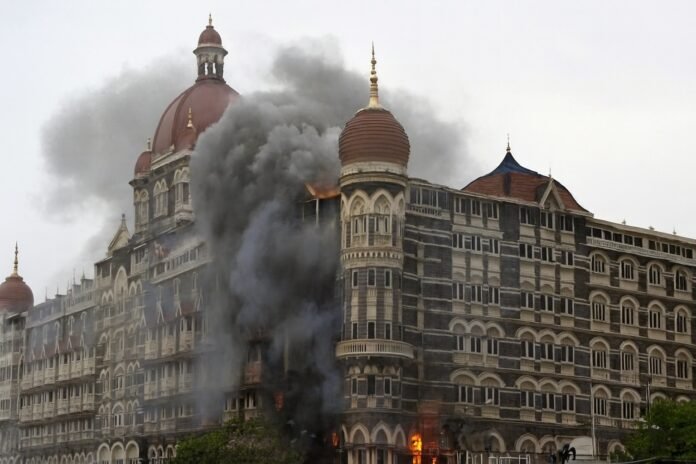New Delhi: Today marks the 17th anniversary of the 2008 terror attacks, a devastating and meticulously planned assault that shook India’s financial heart and left the city in its darkest hour.
The attacks exposed Pakistan’s role in fomenting violence inside India. When Pakistani national Ajmal Kasab was apprehended, he openly confirmed the involvement of Pakistan‑based handlers in orchestrating the Mumbai bombing, laying bare the overt plans to spread terror across India.
As the nation honors the victims, survivors, and the fallen forces on the 17th anniversary of 26/11, we turn to a comprehensive review of multiple Pakistan‑sponsored terror incidents on Indian soil and the ways in which the country’s intelligence agency, the ISI, has been either directly or indirectly complicit in most of them.
The report on Pakistan‑backed attacks in India since 1947 has been released by NatStrat, a New Delhi‑based NGO that specializes in strategic and security studies. NatStrat’s analysis charts a detailed timeline of hostile incidents from Independence through to the Pahalgam massacre in 2025.
Many of these attacks have links to Pakistan‑based groups such as Lashkar‑e‑Taiba (LeT), Jaish‑e‑Mohammed (JeM), and Harkat‑ul‑Mujahideen (HuM), which were frequently coordinated or supported by the ISI.
The study summarises the neighbour’s adoption of terrorism as a state policy against India, grouping 26 incidents into five broad phases corresponding to key periods since 1947.
It documents Pakistan’s role—ranging from suicide bombings and cross‑border infiltrations to full‑scale military crises like the 1999 Kargil war—which later evolved into narco‑terrorism, information warfare, and cyber‑attacks.
The analysis states that the 2001 Parliament attack and the 1999 IC‑814 hijacking could not have occurred without active ISI coordination.
The first two phases of Pakistan‑sponsored terror spanned 1947‑1971 and 1972‑1989. In the early years after Independence Pakistan stoked rebellion in Jammu and Kashmir’s Poonch, assisted insurgents in the Northeast, and fought two full‑scale wars in 1965 and 1971. From 1972‑1989, the ISI spearheaded support for the Khalistan movement and hijackings, notably the 1971 Indian Airlines flight from Srinagar to Lahore, which was subsequently bombed in 1971.
In August 1984, another Sikh‑separatist hijacking of a Srinagar‑bound flight diverted to the UAE, where the hijackers surrendered to authorities.
After 1971, when Indian forces had decisively checked Pakistani advances, there was a lull until the 1990s, when the ISI re‑ignited its terror agenda in Jammu and Kashmir.
Under the K2 project, the ISI sought to destabilise Punjab via the Khalistan movement, believing that internal weakness would pave the way for the larger “expansionist” designs in J&K.
The 1990s brought a spate of bomb blasts across the country: the 1993 Mumbai blasts, the 1996 Lajpat Nagar explosion, the 1998 Coimbatore bombings, the 2000 Red Fort attack, and the infamous 1999 Kandahar hijacking.
The next twenty years, from the early 2000s to the 2025 Pahalgam attack, saw relentless Pakistani involvement despite Indian accusations and international condemnation.
In 2001, the Indian Parliament fell victim to Pak‑trained terrorists, the Akshardham temple was targeted in 2002, and Delhi experienced a series of blasts in 2005. The 2006 and 2008 attacks on the financial capital culminated in 26/11, where ten Laskar terrorists killed nearly 175 people.
Recent assaults, aided by the ISI, have largely focused on the Indian Armed Forces. Incidents such as Pathankot (2016), Uri (2016), Nagrota (2016), Pulwama (2019), and the 2005 Pahalgam attack illustrate Pakistan’s evolving strategy to inflict greater damage than before.
Stay informed on all the latest news, real-time breaking news updates, and follow all the important headlines in world News on Latest NewsX. Follow us on social media Facebook, Twitter(X), Gettr and subscribe our Youtube Channel.



